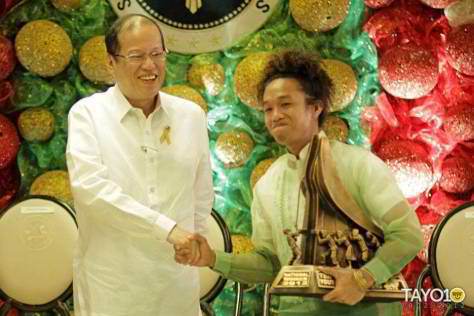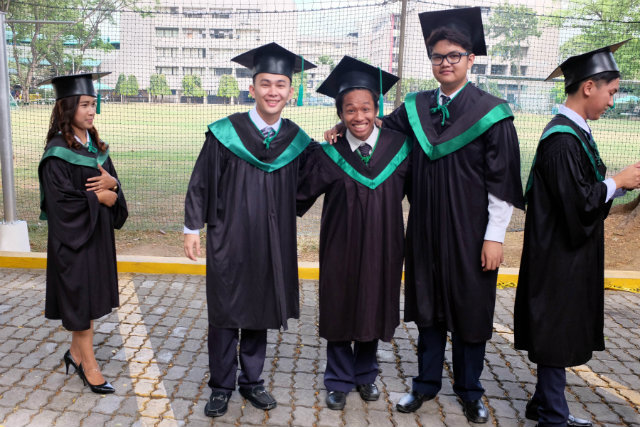From street child to Atenean: The story of Rusty
CLASSMATES. Rusty graduated from Xavier University- Ateneo de Cagayan with a bachelor’s degree in Development Communication. Rusty was a former street kid who, with sheer determination, was able to get off the street. All photos by Bobby Lagsa
Here is a story of how a street child, exposed to drugs and crime at a young age, went against all odds and graduated from Ateneo
CAGAYAN DE ORO, Philippines – In late 2009, 20-year-old Rusty Quintana lined up at a classroom in Xavier University – Ateneo de Cagayan for a shot at one of the scholarship grants that the university offered.
Though unsure that he would get a chance of entering his dream university, he queued up anyway.
Rechelle Tolinero, a faculty of the Development Communication Department at XU, said that she first met Rusty on that day for an interview for a scholarship grant. “We knew right there that he was different, that there was something about him,” Tolinero said.
Rusty was wearing his best clothes that day – though his best was an almost tattered shirt and faded pants. He did not cut his hair for a while and his thick kinky hair stood out.
A native of the Agusan river in Barangay Florida in Butuan City with lineage from the indigenous Banwahon tribe, Rusty‘s brown skin and hair is hard not to miss.
“When it was his part for the interview, Rusty was quick to point out that if possible, we converse in Bisaya because he cannot speak English,” Tolinero said.
In fact, Rusty did not finish his elementary and high school.
Rusty was only armed with a diploma from the Alternative Learning System (ALS) of the Department of Education, a proof that he is eligible to enter college.
“But what struck us the most is his honesty and straight forward demeanor, when he came here, he had no pretentions that he knew something, or (that) he could speak English, unlike those who came before him in the queue who struggled to speak in English just to prove a point,” Tolinero said.
The kid from the streets

Rusty Quintana shakes hand with President Noynoy Aquino as he receives Dire Husi’s award as one of the Ten Accomplished Youth Organizations in the Philippines
Rusty is a street kid who grew up outside the grand gates of Xavier University, near the historic Plaza Divisoria.
He was just 7 years old when he was plucked out of their home by his older brother, Rodolfo Quintana Jr, and was brought to Cagayan de Oro City in 1996, to get away from their troubled home.
Upon reaching Cagayan de Oro, they lived in shanties near the CDO River. There, Rusty spent his days outside the gates of XU, asking for some change and hanging out at the statue of Ramon Magsaysay.
One day, his brother disappeared. He later learned learned that he was arrested by the police on charges of drug pushing.
Rusty would soon find himself at the Mother Theresa Foundation, a shelter in Upper Puerto, where he spent almost 4 years.
CONTINUE READING on Rappler.com

Recent Comments